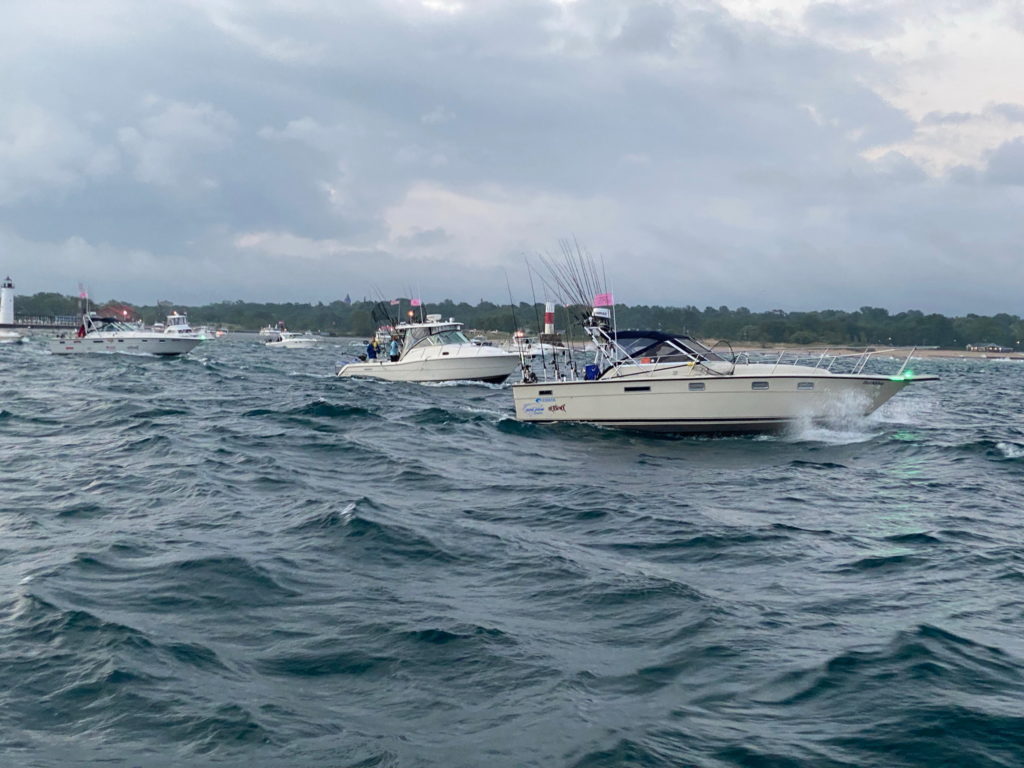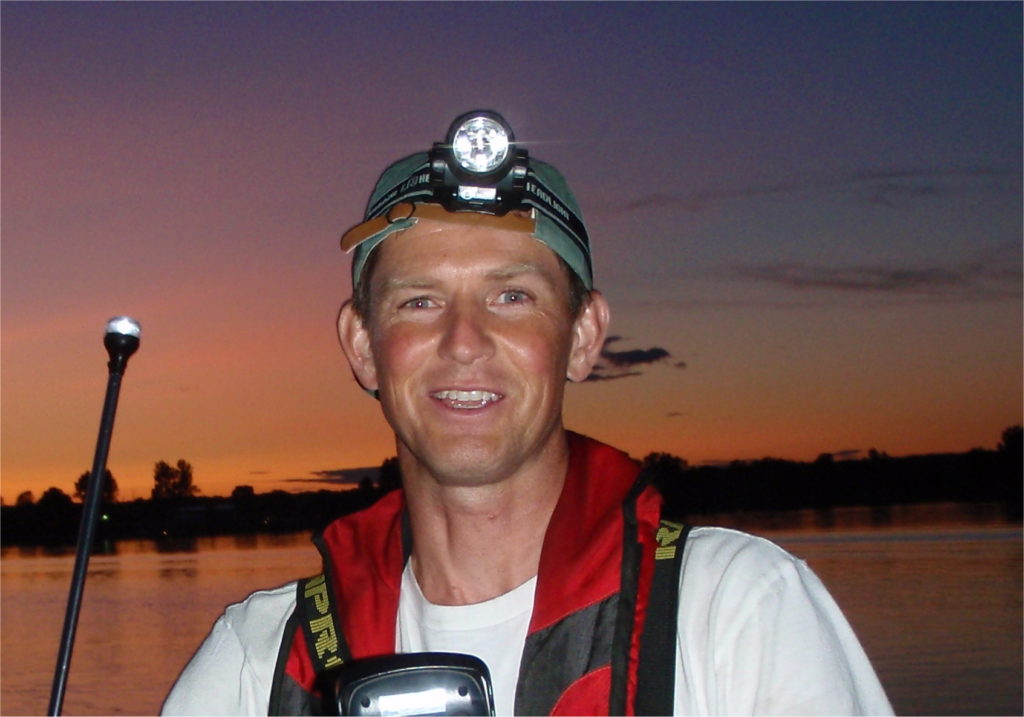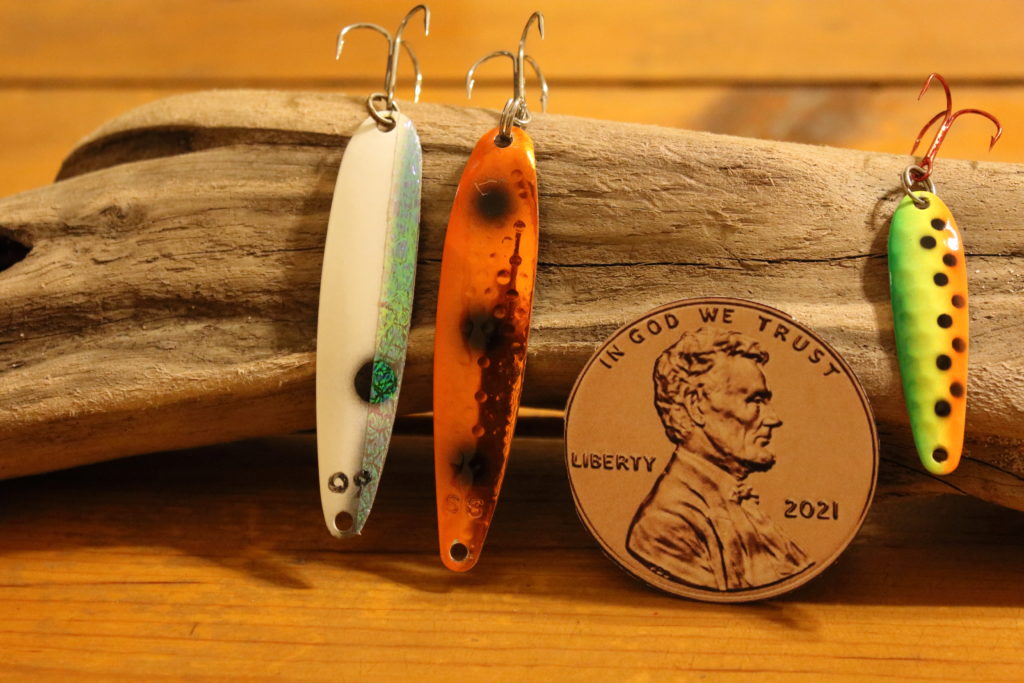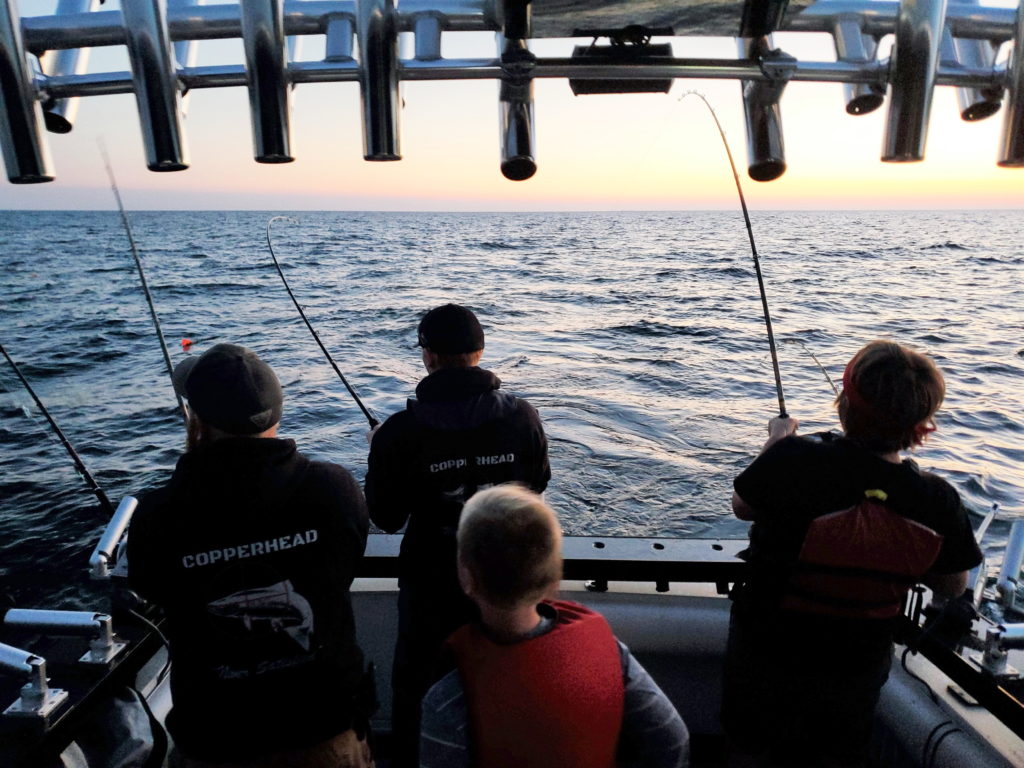Under Pressure
WARNING: This article contains MATH (and big words). MATH has been known to cause headaches and nausea in some anglers (including myself). Proceed with caution. If symptoms of math or science overload occur, stop reading and seek fresh air and open water immediately.
There’s a lot of fake news out there these days. Anglers need to be able to pick out the facts from the B.S. floating around in the pools of the inter-webs and the dock talk. Atmospheric pressure is often held responsible for good and bad fishing trips, but how much of this talk is myth and how much is fact?
What is atmospheric pressure?
On April 13th, 2018, Lake Michigan’s port of Manistee experienced a localized weather phenomenon known as a seiche. During this event, the Manistee River channel flowed backwards. This caused water levels to rapidly rise roughly ten feet, damaging docks up and down the channel. The flood event was caused solely by a rapid change in atmospheric pressure. A centralized low-pressure passed directly over the Manistee harbor while surrounding high pressure essentially pushed the water into the less resistant low-pressure area.

This event illustrates the powers of atmospheric pressure that we typically do not see or feel while we go about our daily terrestrial lives. While it is hard to recognize, the air that surrounds us has a weight. Differing air masses across the globe weigh differently. Colder air is denser and weighs more than warmer, less dense air. Our bodies are acclimated to this weight from the moment we are born.
Fish experience the effects of atmospheric pressure differently than us. While we live a life in air that weighs very little, a fish lives a life in water that weighs much more. In addition, you must add the weight of the air on the surface of the water.
We as humans live our lives primarily horizontally while fish live their lives horizontally as well as vertically. If we lived our lives vertically within our atmosphere it would be much easier to understand a fish’s life because air pressure changes with altitude.
Effects of Atmospheric Pressure on Fish Behavior:
Let’s get down to what we all want to know. How does this atmospheric pressure sciency stuff affect my fishing? According to Dr. Tim Johnson, Great Lakes Research Scientist for the Ontario Ministry of Natural Resources and Forestry, “Most fishes contain a swim bladder – a gas filled sac inside the body cavity that helps the fish maintain its position (depth) in the water column. The fish want to remain at a certain depth because its physiology is optimized over a narrow range of temperatures with warmer temperatures nearer the surface (lower pressure) and cooler temperatures deep. When a significant low-pressure system moves in (such as with the arrival of a storm) the atmospheric pressure drops so the volume of gas in the swim bladder increases (for a given depth) putting pressure on organs and making the fish uncomfortable. Like ourselves, when we don’t feel good, we tend to be less active (and in the fish’s cases not moving around as much or wanting to feed).

“General anatomy including size of the “gut cavity” (the inside of the fish), and relative size of organs including the swim bladder varies with different fish species. There are also two different types of swim bladders related to whether the fish maintain a connection from the gut to the swim bladder (trout, salmon, and herrings) or not (perches, basses). It is slow and energetically costly to have to exchange gas with the blood stream (occurs in both groups, but the former group (called physostomes) can expel gas (“burp” or “fart”) through the gut connection. Thus, these fish may be somewhat less subject to changes in barometric pressure than the physoclists (those who can only expel gas through diffusion into the blood stream).”
That’s a lot to “digest” as anglers, so I’m going to try to break it down. Practically speaking, low pressure equals fish who behave in a less active manner. Here are a few ways to combat low pressure while on the water:
Smaller Presentations:
Low pressure systems affect fish’s stomachs, essentially causing them to be bloated. If you’ve ever gone out to eat and had too much Mexican food, you may know what it feels like to be a fish during a low-pressure event. Now, after you’ve had your fiesta meal, would you want to eat another full meal or just eat a small dessert? If I were a fish during an extended period of low-pressure, I would be more likely to eat a smaller baitfish rather than larger forage offerings during that time. Try smaller, lighter lures.
Slow Down:
Now you’ve had your chips and salsa, a couple of Coronas, your muy grande fiesta meal, and your dessert. You lean back in your chair and listen to the Ranchera music and your 10-year-old child asks you if you want to play tag in the parking lot. Not going to happen! Fish under low pressure conditions don’t want to play tag either. They probably aren’t going to want to chase your magnum spoon sprinting by at 3.75 mph. Monkey Puke isn’t just a color!
Depth Effects:
According to Dr. Tim, atmospheric pressure affects fish differently within the water column, “This all comes down to Boyle’s Law (physics). As pressure increases, the volume of gas decreases. The deeper the fish is in the lake, the more pressure it is already feeling, and thus a change in barometric pressure will proportionately be lower than for a fish nearer the surface.”
What this means is that the same level of pressure will affect lake trout on the bottom in 120 FOW differently than a mixed bag of scum line fish in the top 25 FOW higher in the water column. The fish up high will experience more adverse effects than the fish down deep. If you find yourself fishing in a low-pressure system and marking fish higher in the water column that won’t bite, possibly seek fish deeper in the water column to offer your presentation to. These deep fish may be more active during this time.

Bait Fish Are Different:
According to Dr. Tim, if your target fish species is feeding primarily on Gobies, be aware that Gobies are practically immune to the effects of atmospheric pressure. This is because they do not have swim bladders, allowing them to stay on the bottom, where their primary habitat is, most efficiently. Another bait fish that does not have a swim bladder is the deep-water sculpin.
Putting It All Together:
You should keep in mind that atmospheric pressure is only one small element in a constantly changing environment. May 1st of 2021, we fished a local tournament out of Manistee, Michigan. Team Copperhead was catching fish consistently during pre-fishing in the weeks leading up to the 1-day tournament. The week before the event, the weather had set up in a consistent north wind with moderate to high pressure. Lake trout and salmon were feeding heavily in the top 25 feet of the water column in 50 – 80 FOW. These fish were feeding on smelt (stomach content evidence). Another group of fish (primarily lake trout) were on bottom in the 20-30 FOW area. These fish were feeding exclusively on gobies.
The day before the tournament, a strong low-pressure warm front pushed through. Gale winds blew out of the south and the pressure plummeted. The following day (tournament day) the fish had vacated the 50-80 FOW area and the only fish we could find were on bottom in the 20-30 FOW.

Maybe the smelt moved out of there because of the pressure? Or it simply could have been that the wind shift scattered the bait and fish. The fish that we did find seemed to be just as aggressive as before. I asked Dr. Tim for his analysis.
“Probably – as the atmospheric pressure drops, the gas volume expands, so the fish may move down to increase the pressure to try to regain the original gas volume. But 30ft of depth equates to 1 atmosphere of pressure (14.7 psi or 0.445 pounds of pressure per foot of depth increase). Weather reports typically refer to changes in inches (or mm) of mercury (so 1 atm = 29.92 in of Hg so roughly 1 inch of Hg per foot of depth). The lowest air pressure ever recorded was just above 26 inches of Hg (during hurricane Gilbert in 1988), so fish moving up and down due exclusively to changes in atmospheric pressure will be modest. I think your scattering due to waves and currents, resulting from the storm is more plausible – smelt eat plankton which drift at the mercy of the currents (they can move somewhat and mostly vertically up and down but can’t outswim a current) so as the lake becomes more dynamic during the storm, the smelt disperse or move to try to relocate their food after the storm.”
Using a barometer to predict fish behavior:
With the availability of the internet wherever we may find ourselves these days, having a barometer on board is not as relevant as it once was. The National Oceanic and Atmospheric Administration (NOAA) provides information regarding atmospheric pressure. A product of NOAA is its National Data Buoy Center (https://www.ndbc.noaa.gov/). Chances are that if you are fishing on the Great Lakes, there is likely a weather station or weather buoy nearby collecting information on local pressure. Many of the weather stations compile information into a chart, making it easy to see the current trend in the pressure; up, down, or steady – high or low.
I’m not an atmospheric pressure denier, but I think it has less effect than we give it credit for. Fishing is usually it’s best when a stable air mass settles in and the pressure stays relatively consistent for a longer period of time. The fish likely enjoy this consistency in their ever-changing environment and are more comfortable feeding on bait fish who are also enjoying consistent ecological conditions. Periods of rapid pressure changes are usually associated with wind events and precipitation. Poor fishing is likely due to a combination of these environmental factors that negatively affect our fishing by moving or scattering the baitfish (winds and currents) and temporarily giving our target fish a mild case of the bends (pressure). Keep an eye on the weather forecast and always have a contingency plan.
For more tips, fishing reports, and tournament life, follow our “Never Satisfied” blog at copperheadfishing.com and find and follow us on facebook and Instagram @Copperheadsportfishing.
